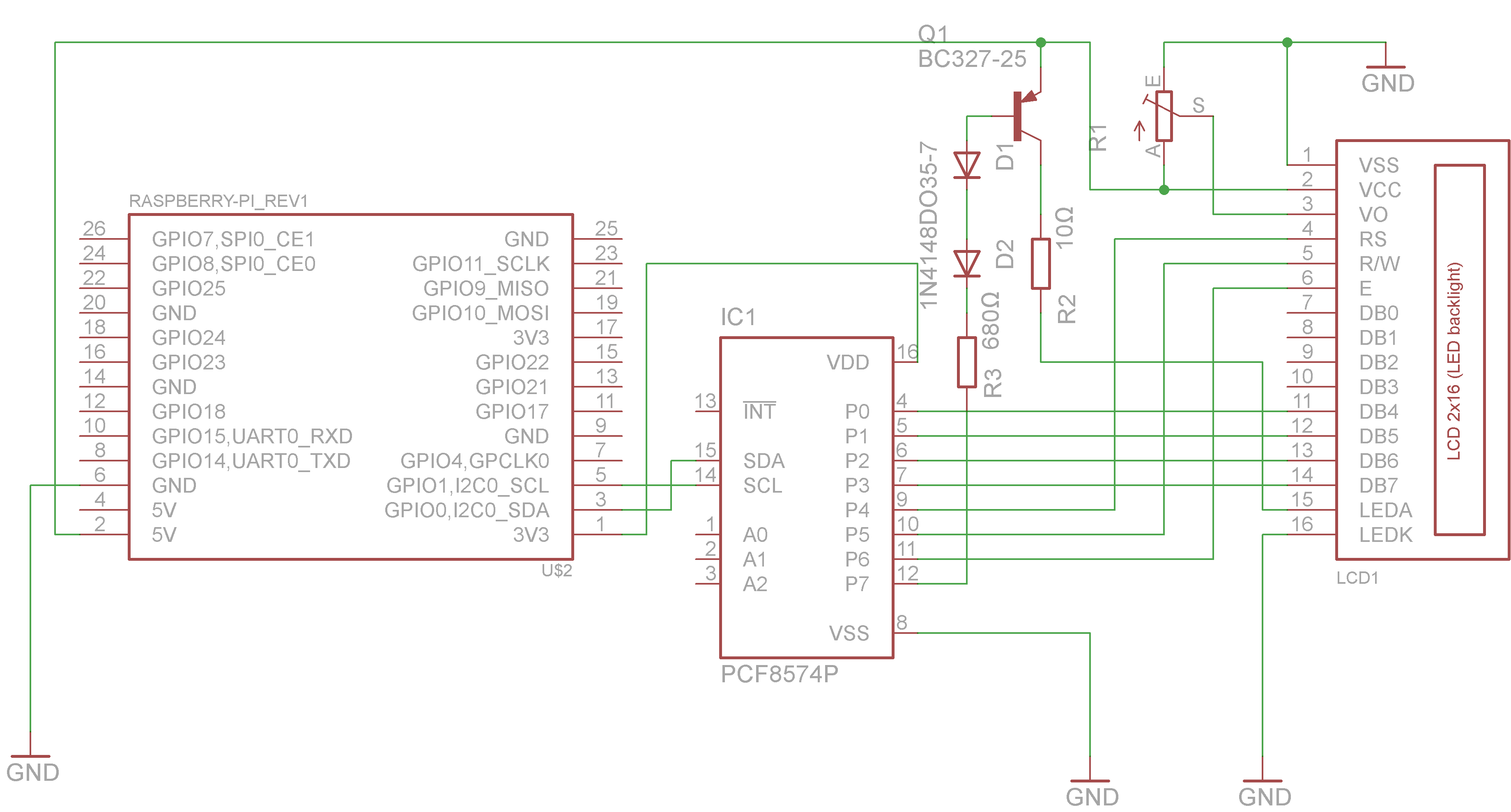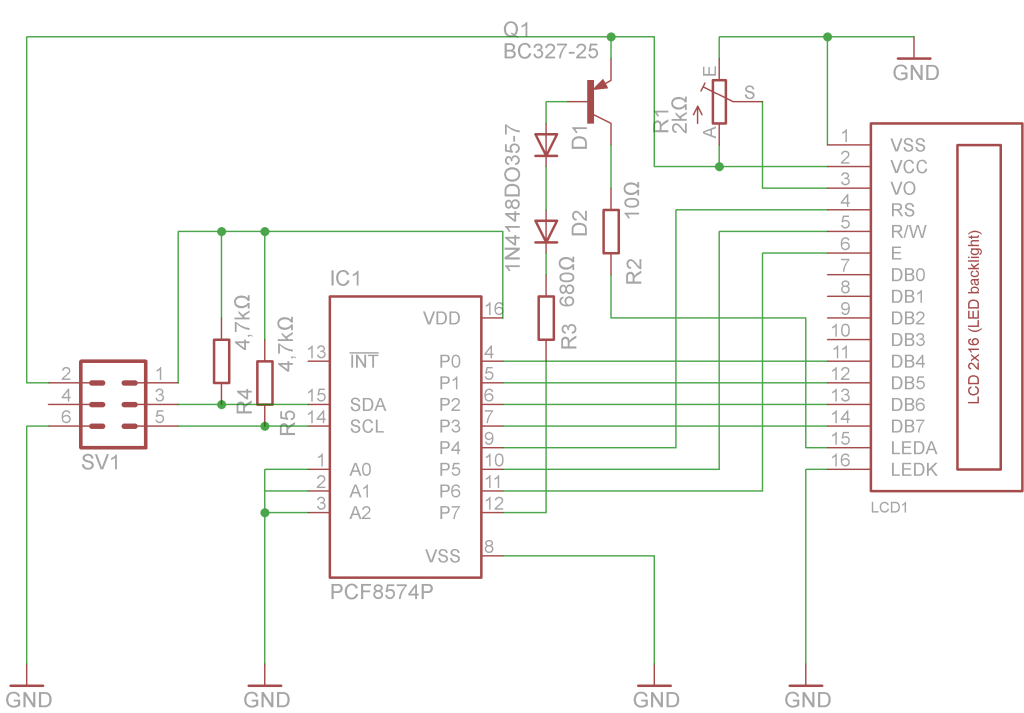Hi everybody,
some application, i.e. XBMC can show informations on a display by using LCDproc as driver.
This post describes a way to connect a HD44780 display to a Raspberry PI by i2c bus.
Let’s start with the physical layer. This is the overview schematic on how to connect the display to a Raspberry PI.

Based on these I developed small board with a 6 Pin header which is Pin compatible to the Raspberry PI. So a simple 6 pole ribbon cable can be used to connect the HD44780 Display to the fruit.
Here is my PCB. First the schematic.

and my board layout. Unfortunately there are a lot HD44780 models available and the location and the direction of the pins are different, so you have to adapt the layout to the specification of your display.
Continue reading Raspberry PI: Connecting a HD44780 Display over I2C Bus